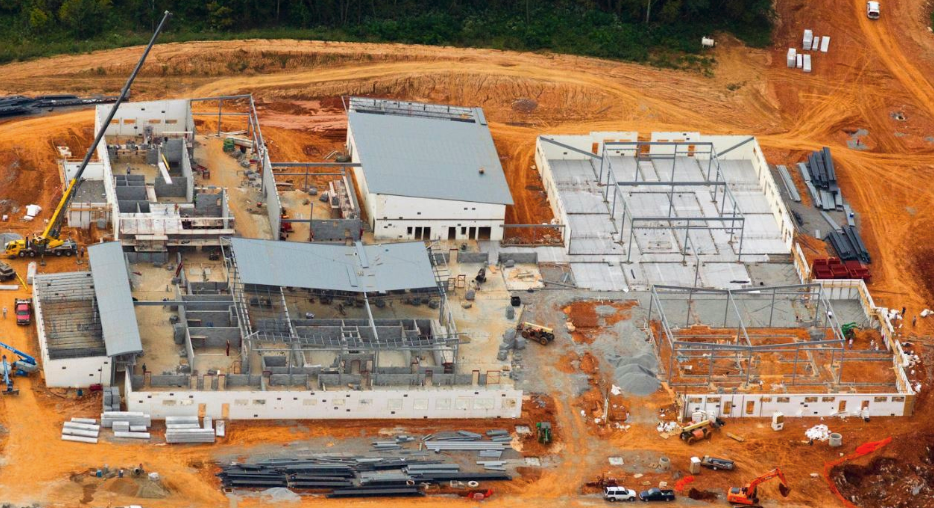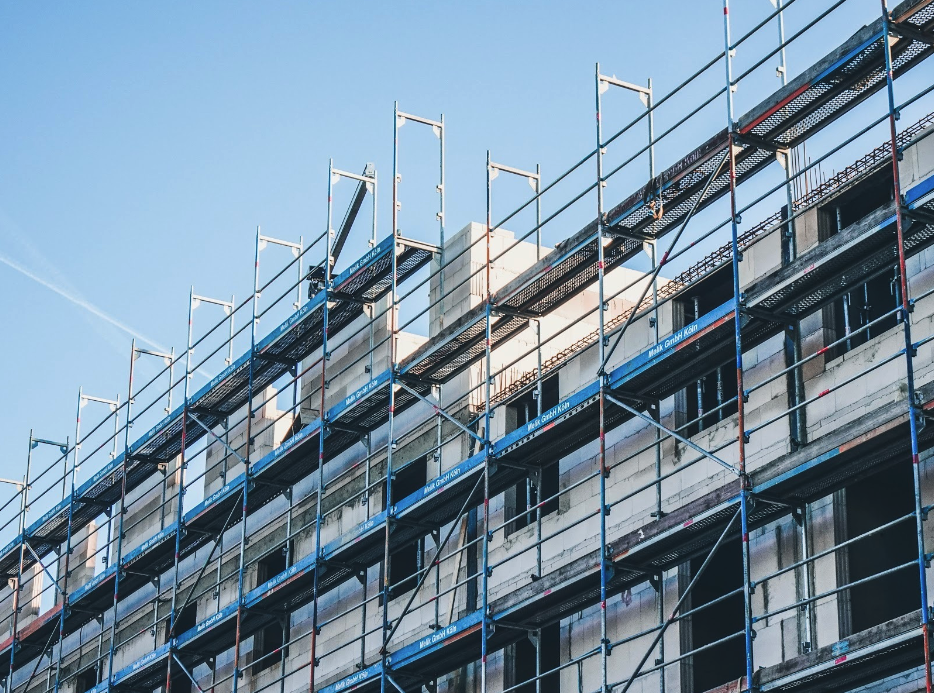
What Is Construction Phasing and Why Is It Important?

Construction phasing is revolutionizing the way we approach building projects. By dividing a project into manageable segments, it is a strategic method for tackling large-scale developments while also maintaining operational continuity.
Understanding Construction Phasing
Construction phasing is a strategic approach where a project is completed in distinct phases, rather than all at once. This method is crucial for projects where ongoing operations need to continue with minimal disruption. It involves careful planning and execution to ensure that each phase complements the next in order to keep the project on track without compromising daily operations.
Evolution and Models of Construction Phasing
Historical Context of Construction Phasing
The concept of construction phasing has evolved significantly over the years.
Historically, construction projects were often completed in a linear fashion, with each stage commencing only after the previous one was fully completed.
Different Models of Construction Phasing
Construction phasing is not a one-size-fits-all approach, and it can vary greatly depending on the project's nature.
Residential Construction
In residential construction, phasing often involves sequential development that starts with critical infrastructure and public amenities, and is followed by individual housing units. This approach allows developers to gauge the market response and adapt future phases accordingly.
Commercial Construction
In contrast, commercial construction projects, such as office buildings or shopping centers, may adopt a more integrated phasing approach. Here, the focus is on ensuring that commercial activities can commence quickly in order to generate revenue, even as other parts of the project continue. For instance, a shopping center may open its main retail areas first, while continuing to develop additional phases that might include entertainment zones or dining areas.
Large-Scale Projects
In large-scale projects such as urban developments, construction phasing becomes more complex. These projects typically involve a combination of residential, commercial, and public spaces. The phasing is carefully planned to foster the community's growth, align construction activities with market demands, and address infrastructure development needs.
By adopting different models of construction phasing, project managers can tailor their strategies to meet specific project requirements, market conditions, and stakeholder expectations. This type of adaptability is key to the success and efficiency of modern construction projects.
In-Depth Analysis of Benefits of Construction Phasing
Enhanced Financial Flexibility
Construction phasing has a significant impact on the financial aspects of building projects. By dividing the project into phases, it becomes easier to manage the financial commitments at each stage. This approach also opens up better loan structuring opportunities, as lenders may be more inclined to fund smaller phases rather than a large lump sum.
Phased construction can also attract different funding sources, including private investments or government grants that are often more accessible for smaller-scale projects. This type of financial flexibility is particularly advantageous for organizations that need to carefully manage cash flow, like start-ups or non-profit organizations.
Improved Project Risk Management
Breaking a project into stages reduces the complexity of risk management. Each stage acts as a milestone for project overseers to identify and address potential issues before moving forward. This approach allows for thorough quality control, regulatory compliance, and the ability to adjust plans based on unforeseen circumstances or market changes.
Streamlined Resource Management
In a phased construction project, resources such as labor, materials, and equipment can be allocated more efficiently. Each phase has specific requirements and allows for optimized resource allocation and helps to minimize waste and downtime. This strategic approach also improves scheduling to help ensure the timely availability of resources.
Resource Utilization in Ongoing Construction Projects

Breaking construction into separate segments improves resource management. Each stage can operate with its own personnel, materials, and machinery, for a more precise distribution of assets. This customized management approach leads to better scheduling and ensures that resources are available when needed, which ultimately streamlines the overall building timeline.
Adjusting Projects to Match Market Changes
Developing projects in stages is a dynamic method that is designed to meet market demands. Real estate developers have the ability to modify upcoming stages based on the market's reception to completed stages. This approach is particularly beneficial in uncertain markets where consumer tastes and economic indicators are prone to sudden shifts. By tailoring project progression to align with current market conditions, developers can increase their success rate and enhance profitability.
Sustainability and Community Impact
Phased construction also provides a sustainable approach to development. By focusing on smaller segments, you can incorporate environmentally-friendly practices and materials in each phase. Staggering construction activities also helps reduce the impact on the local community and environment, which helps to create a harmonious relationship between the development and its surroundings.
Challenges in Phased Construction
While phased construction offers strategic advantages, it also poses unique challenges that include increased overall costs due to extended timelines and complex coordination needs. Each phase requires distinct planning, permitting, and coordination, that can potentially lead to delays and logistical complications.
Integrating Insulated Concrete Forms (ICF) in Phased Construction

Integrating insulated concrete forms (ICF) from Fox Blocks in phased construction offers innovative ways to enhance speed of construction, energy efficiency and structural integrity throughout the building process.
Design and Benefits of ICF
Insulated concrete forms represent a groundbreaking advancement in modern construction techniques. They consist of a system of interlocking modular blocks or panels made from a durable, stay-in-place insulating material, which act as a forming system when the cavity is filled with concrete.
ICF is a unique design that provides several benefits:
Energy Efficiency
ICF provides a superior double layer of continuous insulation without thermal bridging that significantly reduces heating and cooling costs in comparison to other traditional wall assemblies.
Strength and Durability
The reinforced concrete core ensures a robust and long-lasting structure that is capable of withstanding severe weather conditions and providing enhanced fire resistance.
Speed of Construction
ICF are designed for quick and easy assembly, which accelerates the construction process, a crucial advantage in phased construction projects. Buildings are weathertight much faster allowing for interior walls to proceed much earlier than with traditional building assemblies. ICFs can also be constructed in any climate zone and in cold weather.
Design Flexibility
ICFs can be used for below grade and above grade wall, multi-story buildings and tall walls.
Suitability for Phased Construction
ICF are particularly well-suited for phased construction projects for several reasons:
Adaptability
Their modular nature allows for flexibility in project planning and execution. Changes in design or project scope can be more easily accommodated with ICF.
Staging Efficiency
Since ICF combines structure and insulation in one step, they simplify the construction process, which makes it easier to manage and coordinate across different phases.
Environmental Impact and Sustainability
ICF also plays a significant role in promoting sustainable building practices:
Reduced Carbon Footprint
The energy efficiency of ICF leads to lower energy consumption throughout the building's life, which significantly reduces its carbon footprint.
Sustainable Materials
Many ICF systems use recycled materials in their construction to further enhance their environmental friendliness.
Long-Term Sustainability
The durability of ICF structures means a longer life span and less need for repairs and maintenance, which contributes to reduced resource consumption over the life cycle of the building.
Using insulated concrete forms in phased construction enhances efficiency and effectiveness and also meets the growing demand for sustainable and eco-friendly building practices.
The Future of Construction Phasing

Future construction phasing will likely integrate more deeply with technologies like AI and machine learning for predictive analysis and resource optimization. Building Information Modeling (BIM) will also play a significant role in enhancing project visualization and management.
The evolution of sustainable and efficient building materials, alongside enhanced digital collaboration tools, will contribute to more efficient and environmentally-responsible construction phases.
Building Progressively with Fox Blocks
With strategic construction phasing and innovative materials like insulated concrete forms from Fox Blocks, you are at the forefront of transforming your construction projects. Our team is dedicated to supporting your efforts to enhance efficiency, reduce costs, and prioritize sustainability in your building endeavors. Contact us today for more information!